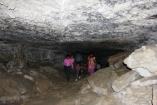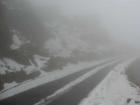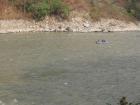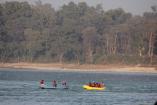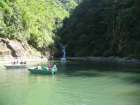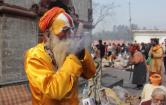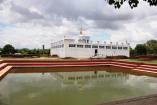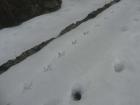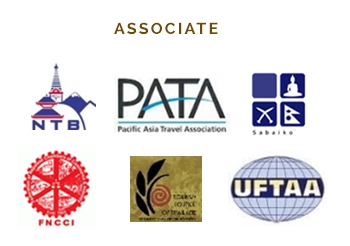SWAYAMBHUNATH STUPA
Swayambhunath is one of the most ancient religious architecture atop a hill in the Kathmandu. The Swayambhu complex consists of a stupa, a variety of shrines and temples, some dating back to the Licchavi period. A Tibetan monastery, museum and library are more recent additions. The stupa has Buddha's eyes and eyebrows painted on. The stupa represents Buddha’s mind. To visit a stupa is said to be the same as meeting a Buddha in person. It offers peace, freedom and joy to the whole world and ultimately helps us to obtain perfect enlightenment. Just seeing, hearing about, reflecting upon, or touching a stupa fosters peace and even spiritual release. The stupa pacifies physical and mental difficulties such as sicknesses, famine and conflicts in all areas and directions. Spiritual practices bring stronger results when performed close to stupas than in other powerful places. Visitors and pilgrims walk around the stupa in a clockwise direction and recite mantras, make offerings, turn prayer-wheels and make wishes for the benefit of all beings. Between them, the number one (in Devanagari script) is painted in the fashion of a nose. There are also shops, restaurants and hostels. The site has two access points: a long stairway with 365 steps, leading directly to the main platform of the temple, which is from the top of the hill to the east; and a car road around the hill from the south leading to the southwest entrance. The first sight on reaching the top of the stairway is the Vajra. Much of Swayambhu's iconography comes from the Vajrayana tradition of Newar Buddhism. However, the complex is also an important site for Buddhists of many schools, and is also revered by Hindus.
Harati Temple:- The protective deity of children who is known as the primal mother – Ajima is two – tiered pogoda temple.
Anantapura and Pratapaura:- These two temple were built in the 17th century by King Pratap Malla. These two Shikhara style temples dedicated to Vajrayana deities.
Forms of Buddhas and their Consorts:- Aksobhya, Vairochana, Vajradhatvesvari, Mamaki Tara, Ratnasambhava, Pandara, Amitabha, Tara, Amongha Siddhi and Saptalochini are the ten niches around the Stupa represents the different forms of Buddha and their consorts.
Bajra Dhatu mandala:- The gilt Bajra was installed in the middle of the 17th century by King Pratap Malla represents the sword Chandahasa of Manjushree. The Mandala depicts 12 animals representing the 12 months of the Tibetan Year.
- Get in touch
Get In Touch
India:
Red Planet Tours & Travels
Elite Plaza (opp. Vishal Cinema)
2nd Mile, Sevoke Road
Siligur - 734001
Phone: +91 9933132575(IND)
Nepal: Kathmandu
Red Planet Tours & Travels
Near Hotel Yak & Yeti Road,
Yak & Yeti Lane
Durbar Marg, Kathmandu, Nepal
Phone: +977 1 5330683/+977 9852662216
Nepal: Kakarbhitta/Kakarvitta
Red Planet Tours & Travels
Main Road, Mechinagar Nagarpalika - 06
Post: Kakarvitta, Jhapa, Nepal
Phone: +977 9842633669











